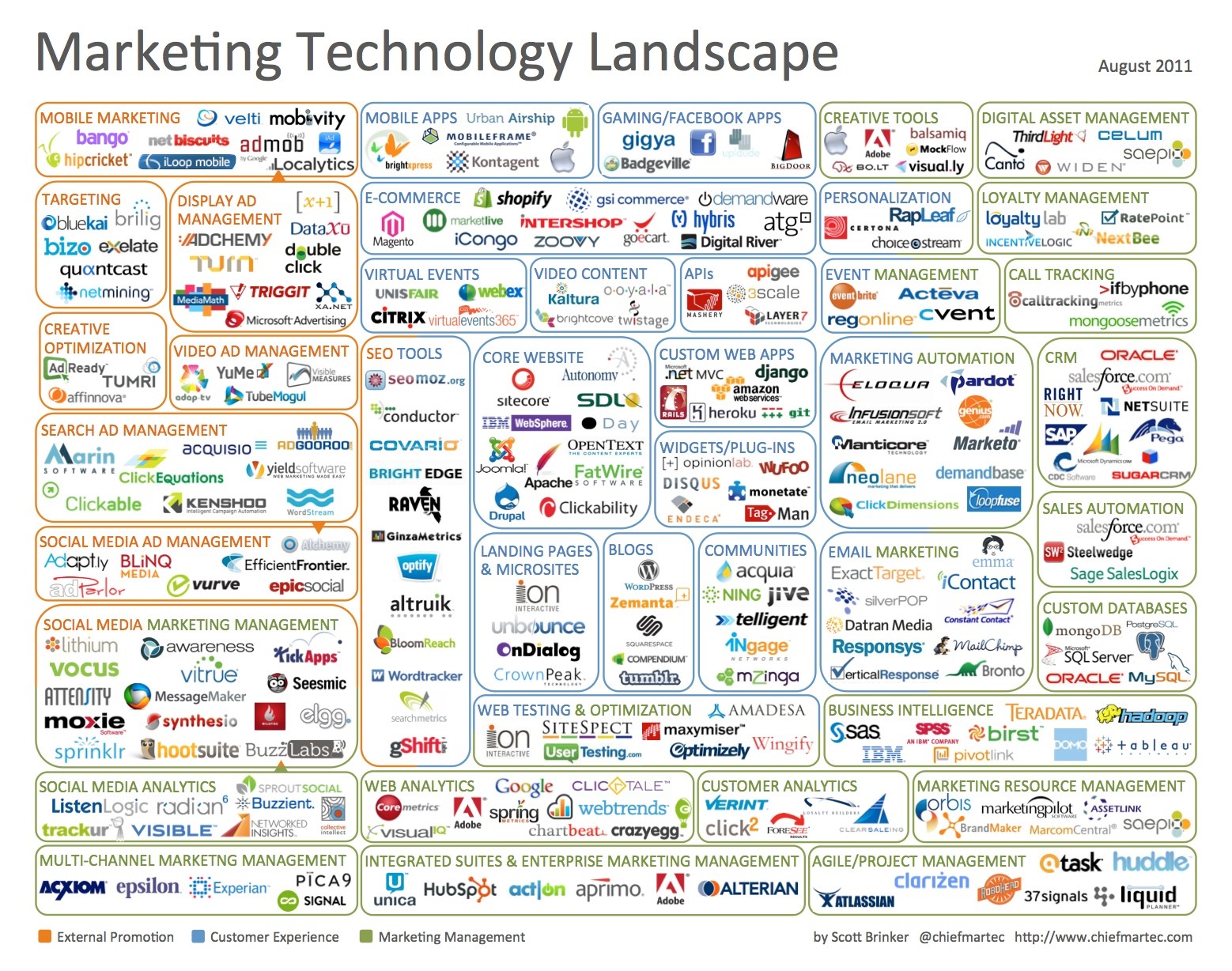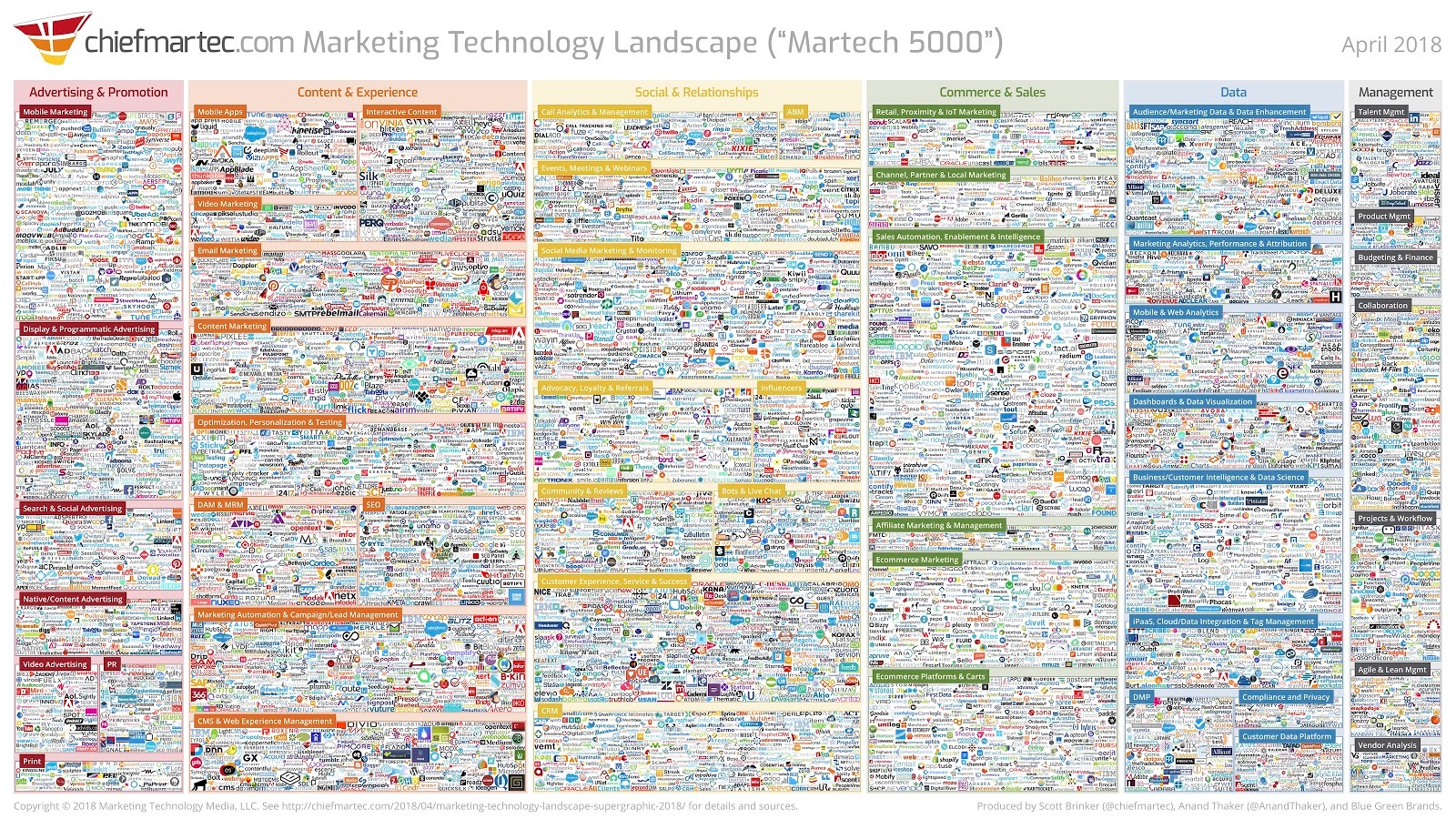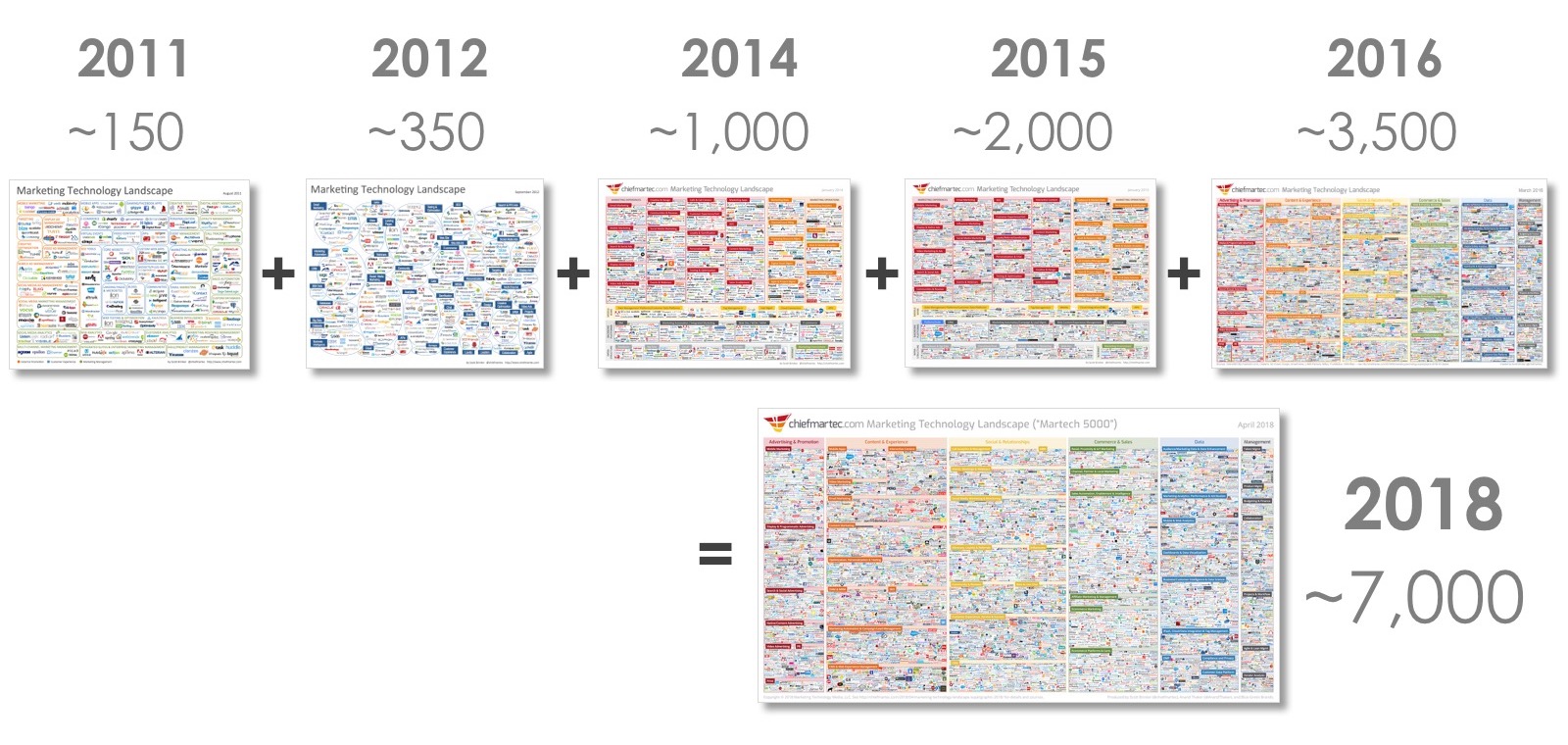You’re the CEO of a fast-growing company. Your new business comes from reliable sources — existing customer base, channel and alliance partners, direct sales team and freemium users of your product. This was a great year, but now the competition is doubling down against your team, and your board wants 100 percent growth over the next 12 months.
“No problem,” you think to yourself.
Your industry has shown that there is plenty of opportunity out there — you just need your data-driven marketing team to have visibility into all the data they need to find those hot leads for the sales team to close them. To achieve this, you'll need to find ways to integrate your MarTech applications. If they can get combined insights from website traffic, product-usage patterns that are segmented by vertical, role and whether it is a freemium or paying customer and an up-to-date customer sentiment score based on history of support tickets and CSM interactions, you can trigger the right in-app notifications and nurture campaigns that will not just lead to more sales, but also happier, more engaged customers.
In an ideal MarTech world
For many fast-growing companies, this means creating a complex network where data seamlessly flows through a variety of applications. It needs to go through the website, marketing automation tools, CRM, ERP (where the master customer data resides), customer success, ticket tracking and the product itself — not to mention many other applications and data sources depending on the industry.
Sounds like a data-pipe dream, doesn’t it? The reality for the typical cloud-savvy, fast-growing company today is that purchasing and implementing cloud-based applications have never been easier. As a result, companies find themselves adding dozens, if not hundreds of cloud applications to their MarTech stack to solve all sorts of business problems. But unfortunately, some marketers make the mistake of purchasing a solution that doesn't even improve their processes.
The MarTech landscape has exploded
Here is the MarTech Application Landscape in 2011 (Courtesy Martech):

And here it is what that same landscape looks like in 2018:

There has been quite an exponential growth over the last 7 years, and other lines of business show similar trends.
 As wonderful as these apps are, it is possible to have too much of a good thing. Data silos and manual data exports all too often become the norm. Fluid sharing of information is a critical operational building block in organizations of all sizes, but integrating the data between these applications becomes harder and cannot be done without dedicated technical resources, which many marketing departments simply cannot afford.
As wonderful as these apps are, it is possible to have too much of a good thing. Data silos and manual data exports all too often become the norm. Fluid sharing of information is a critical operational building block in organizations of all sizes, but integrating the data between these applications becomes harder and cannot be done without dedicated technical resources, which many marketing departments simply cannot afford.
Can Integration Platform as a Service solve MarTech integration issues?
For the cutting-edge marketer, the right integration Platform-as-a-Service alleviates many of the technical challenges around integration, so marketers can focus on building the right processes that work for them and get them more leads.
By definition, Integration Platform as a Service (iPaaS) is a suite of cloud services which enable development, execution and governance of integration flows connecting any combination of on premises and cloud-based processes, services, applications and data within individual or across multiple organizations.
In other words, iPaaS provides a way for organizations to standardize how applications and new business processes are added to the organization. The platform takes care of critical functionality such as guaranteed data delivery out of the box, while providing an easier user interface that helps accelerate how data is connected throughout an organization.
Here’s a simple example of how marketing applications can be integrated in unique ways.
In many ways, iPaaS is the system of pipes that allows for information to flow within an organization. When it does its job, it is invisible, so it may not have the same awareness as other “hot” trends in the industry. But for companies to succeed in 2019, the concept of marketing automation cannot be limited to stand-alone applications such as Marketo and Hubspot. They need to take a more holistic approach for automating that data across many applications. To do so, marketing leaders and CEOs should adopt integration strategies that center around the iPaaS tech stack to make them more agile and competitive.
Access the latest business knowledge in Marketing
Get Access




Comments
Join the conversation...